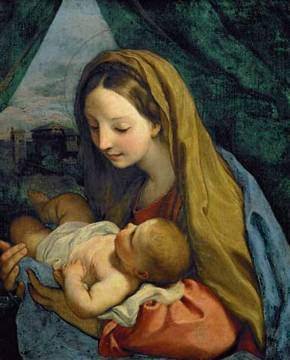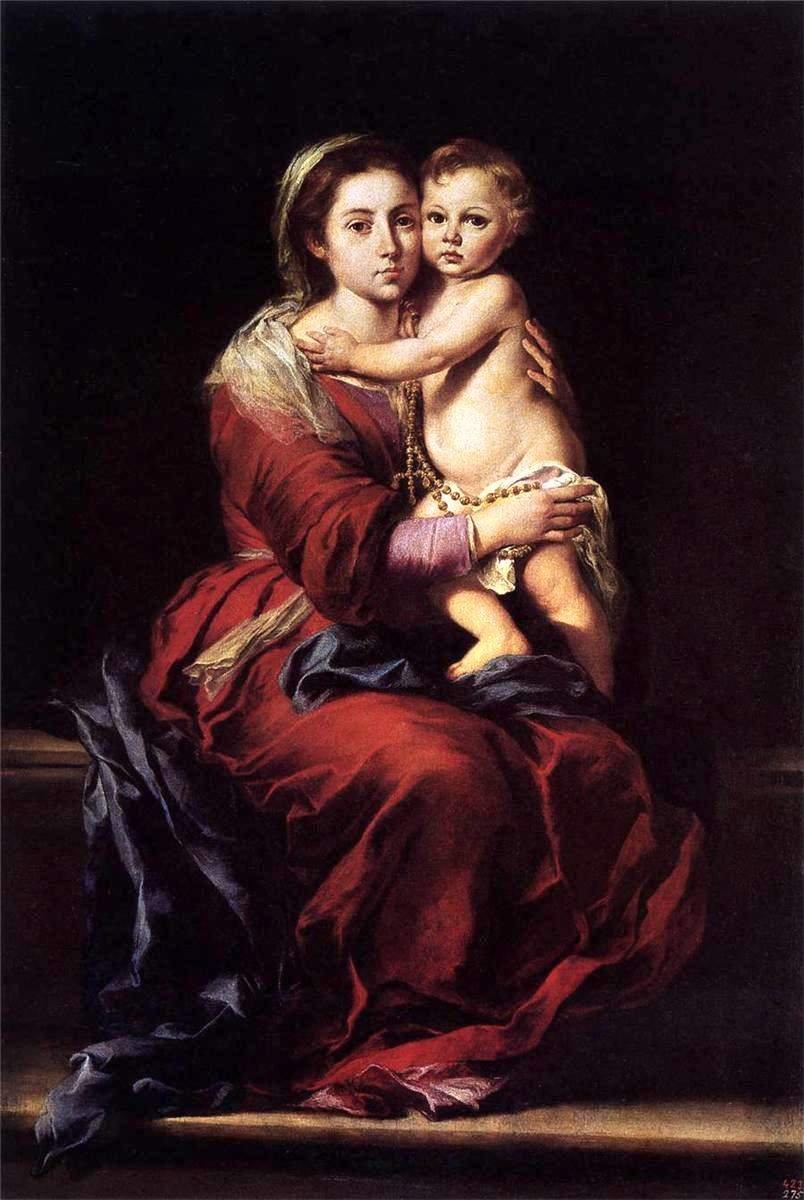In some Catholic writings and documents of the Church, the Blessed Virgin Mary is referred to as a “co-redemptrix” or “co-mediatrix” in salvation through Christ. Those are words and concepts that many Protestants have a hard time with. Here are a few brief words I whipped up on that matter, in response to my new friend Eugene.
The term “co-redeemer” does not imply that the Blessed Virgin Mary had a role in salvation in any way similar, equal, or comparable to that of Christ. No one in the Catholic Church intends to share with Mary anything that is rightly Christ’s — rather, we think Christ’s glory is so bright that it illuminates everything around Him, including his mother. Any honor we give to Mary is just a greater way to more greatly honor Him. Jesus loved His mother, and so we do, too. And she did cooperate in a profound way with God’s plan of salvation.
Now, you have to remember that many Catholics of the past were not speaking English — they were speaking Latin. And the Latin language has different rules and conventions than the English language. One major difference, as I mentioned before, is that the Latin brain likes to put prefixes on things. In many cases where an English speaker would use a preposition, a Latin speaker puts a prefix on a noun or verb. For example, the word “convene” comes from the Latin cum + venio, to “come together.” Rather than say “we come together” as an English speaker might, the Latin speaker would say convenimus. The word “cooperate” is another apropos example. It comes from the same prefix — cum + opero, to “work together.”
In English we are used to the prefix “co-” meaning that people share in equal responsibilities in a job — “co-contributors,” “co-chairmen,” “co-instructors” are all people equally pitching into their jobs. But in Latin the prefix doesn’t imply that. It just means that people are doing the job “with” each other. To say that Mary cooperated (“worked together”) with salvation is quite a different proposition (in both English and Latin) than saying Mary “worked” salvation herself. Similarly to say that Mary is a “co-redemptrix,” as she is sometimes called in Latin, in no way implies that she is on the same level as Christ the Redeemer, is “another redeemer,” or shares in His glory or responsibility. There is only one Redeemer, and that is Christ. To call Mary a “co-redemptrix” only means that she “worked together” — she “cooperated” — with redemption. Remember, she herself had to be redeemed, too!
(Because of this linguistic confusion, it’s not very common for people to use the term “co-redeemer” or “co-redemptrix” in English these days. You will mainly find that in older writings, especially those that were translated directly from Latin. You will not find that term in the present Catechism or in any other recent teaching of the Church.)
Here is a recent teaching of the Church on this very question, from the Second Vatican Council’s Dogmatic Constitution of the Church Lumen Gentium (§62) [which speaks at length about the Catholic Church’s beliefs about Mary and her role in salvation and relationship with the Church]:
This maternity of Mary in the order of grace began with the consent which she gave in faith at the Annunciation [that is, the “Announcement” by the angel Gabriel of Jesus’s coming] and which she sustained without wavering beneath the cross, and lasts until the eternal fulfillment of all the elect. Taken up to heaven she did not lay aside this salvific duty, but by her constant intercession continued to bring us the gifts of eternal salvation. By her maternal charity, she cares for the brethren of her Son, who still journey on earth surrounded by dangers and cultics, until they are led into the happiness of their true home. Therefore the Blessed Virgin is invoked by the Church under the titles of Advocate, Auxiliatrix, Adjutrix, and Mediatrix. This, however, is to be so understood that it neither takes away from nor adds anything to the dignity and efficaciousness of Christ the one Mediator. For no creature could ever be counted as equal with the Incarnate Word and Redeemer. Just as the priesthood of Christ is shared in various ways both by the ministers and by the faithful, and as the one goodness of God is really communicated in different ways to His creatures, so also the unique mediation of the Redeemer does not exclude but rather gives rise to a manifold cooperation which is but a sharing in this one source. The Church does not hesitate to profess this subordinate role of Mary. It knows it through unfailing experience of it and commends it to the hearts of the faithful, so that encouraged by this maternal help they may the more intimately adhere to the Mediator and Redeemer.


